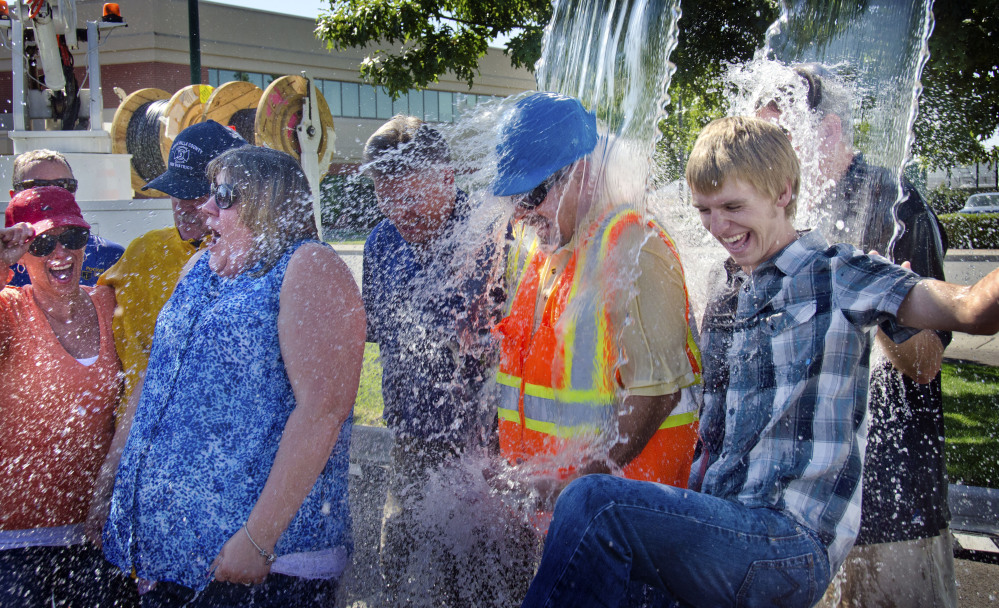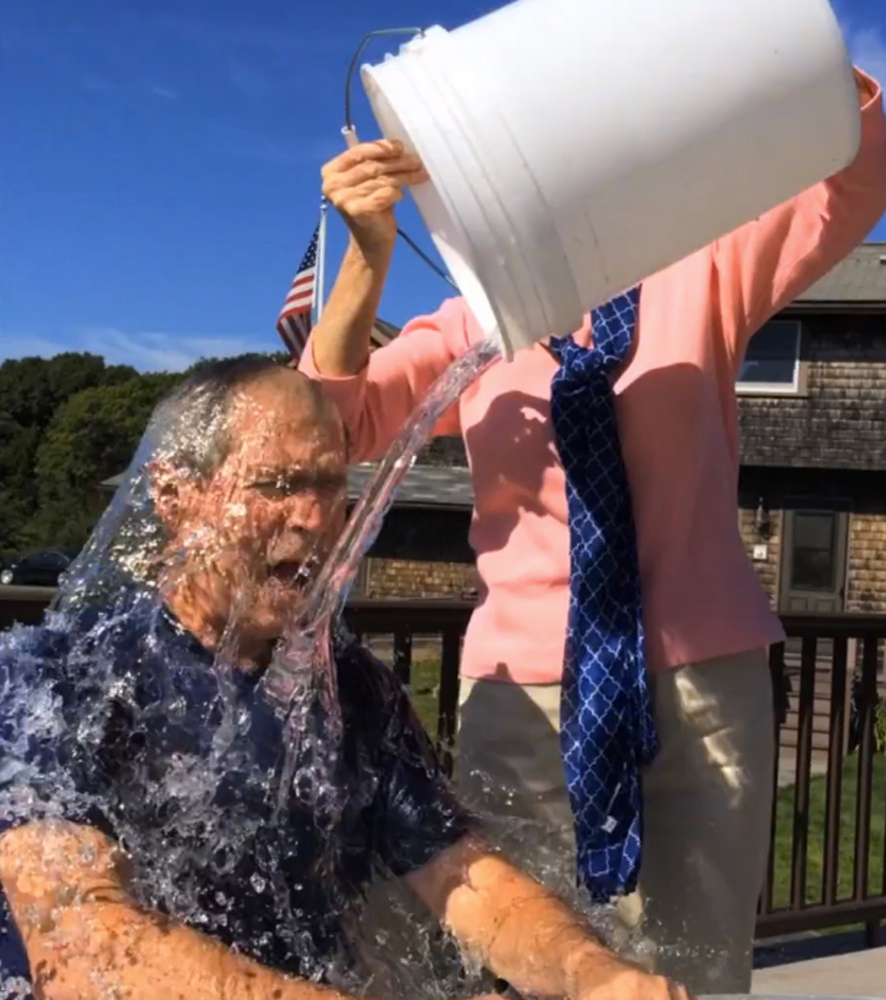In the couple of hours it took an official from the ALS Association to return a reporter’s call for comment, the group’s ubiquitous “ice bucket challenge” had brought in a few million more dollars.
Approaching $100 million, the viral fundraising campaign for the ailment better known as Lou Gehrig’s Disease has put the ALS group into the top ranks for medical charity donations. Since the end of July, the money has been sloshing in at a rate of about $9 million a week. Last year, from July 29 to Aug. 26, the group raised just $2.6 million.
It’s caught everyone off-guard, none more so than the ALS Association folks. But they know this is likely a one-off phenomenon, and the group now faces the task of spending all that money wisely. Research, care and advocacy are the group’s three main missions – but officials say they don’t know yet exactly how they’ll use the windfall.
“I think even if I or any PR person at either a nonprofit or a for-profit company had all of the PR dollars in the world to invest, no one would have come up with this idea,” said Carrie Munk, the association’s spokeswoman. “We realize there are responsibilities that come with being good stewards of these dollars.”
Part of what’s surprising is that ALS – or amyotrophic lateral sclerosis – is one of those “orphan” diseases. It is a neurodegenerative disease that causes paralysis and death, and the association estimates that about 5,600 new cases are diagnosed in the U.S. each year.
This campaign hasn’t exactly put the charity in the same neighborhood as giants like the American Cancer Society, the American Heart Association or Susan G. Komen for the Cure – which raised $889 million, $529 million and $310 million last year, respectively. But it’s moving into the same ZIP code now.
“People who have been in this space for a long period of time feel like it’s a dream come true,” Munk said.
In case you’ve been under the proverbial rock, here are the basic rules: Someone issues a challenge – that you allow yourself to be doused with a bucket of ice and water, like winning coaches along the sidelines. Then, the challengee has 24 hours to make a $100 donation to the ALS Association or submit to the water torture.
In the last month, everyone from Microsoft co-founder Bill Gates to former President George W. Bush has been doused. The Internet and airwaves are awash in videos of people taking the challenge – even if they fully intend to write the check.
Jonah Berger, author of the book “Contagious: Why Things Catch On,” said it’s like a modern-day chain letter – except, in this case, everyone will know if you break the chain.
“It has a lot of the key ingredients that often make people want to share things,” said Berger, a marketing professor at the University of Pennsylvania’s Wharton School. “It gives people lots of social currency to be part of it. It makes you look good. It makes you look smart and in the know; you know what’s going on. And it’s always hard to back down from a challenge.”
And now others are co-opting the bucket challenge for their own causes.
Actor Matt Damon, for instance, dumped toilet water over his head to call attention to his passion – safe drinking water.
Actor Orlando Jones of the television series “Sleepy Hollow” showered himself with bullets in the wake of black teenager Michael Brown’s shooting death by a white police officer in Ferguson, Missouri.
“I’m challenging myself to listen without prejudice, to love without limits and to reverse the hate,” he said. “So that’s my challenge – to me. And, hopefully, you’ll accept this challenge, too.”
But the success for ALS is the kind of thing you can’t really replicate – even if you did it first.
In late June, about a month before the ice bucket challenge exploded, University of Arizona woman’s basketball coach Niya Butts took the “cold water challenge.” After being doused with a 10-gallon plastic cooler, Butts gave her Pac-12 coaching rivals 48 hours to do the same or donate $250 to the Kay Yow Cancer Fund – named for the North Carolina State University coach who succumbed to the disease in 2009. That challenge – #Chillin4Charity – has raised only about $75,000 so far.
“We didn’t raise millions,” Butts told The Associated Press on Wednesday. “But we raised awareness of millions.”
The campaign has had more than 80,000 tweets, 100,000 retweets more than 215 million Twitter reaches, said Susan Donohoe, the Yow fund’s executive director.
The Chronicle of Philanthropy says the ALS Association has, in this short period, raised more than many of the charities on its Philanthropy 400 list.
Send questions/comments to the editors.



